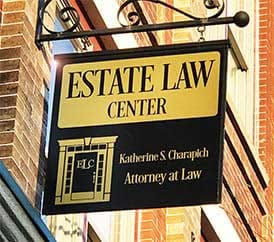Laughing Heir Would be in Err
By Attorney Katherine S. Breckenridge, Esq.
Published November 2, 2017
Probate and Administration : Estate Planning : Virginia
Surprises are meant for birthdays, engagements, and Christmastime; they are not meant to arise at the time of one’s passing.
I recently taught classes on estate planning at RappU, a local organization dedicated to educating area residents. At the beginning of each session, we dissected and examined the structures and parties of estate planning documents, as well as sections of the Code of Virginia that establish the parameters of such protective documents within our jurisdiction. Having set the stage for understanding the components and considerations of estate planning, we then ventured into pouring through case studies that brought to light the importance of planning ahead.
For this examination, consider the transfer of real property – land and land with improvements. Methods of transfer within the Commonwealth include property held as tenants by the entirety with rights of survivorship, joint ownership with rights of survivorship, a transfer on death deed, to devise through a will, and distribution through a trust.
If an individual owns real property in fee simple absolute, she has absolute ownership of the land and the right to dispose of the real property by Deed, will, or trust. If the person chooses to transfer the real property by will, she is called the Testator. The Executor named by the Testator takes on a fiduciary role and will be responsible for transferring the real property to the named beneficiary.
The focus at that point is, who is the beneficiary? If the wife, the Testator, owns property in her name only, and leaves the property to husband, provided he survives the wife, what occurs if husband fails to survive the wife? Perhaps the Testator then leaves the property in equal shares to her children, provided they survive the Testator. What if the children failed to survive the Testator, who takes the interest? Did the Testator select another beneficiary, like grandchildren, and great grandchildren using per stirpes language?
The Testator can name as many “contingent” beneficiaries as she would like. Think of the identification of beneficiaries in terms of a computer language or flowchart. The Testator may also choose to name a charity or charities, such as her church, as a beneficiary at any point in the flowchart.
In the event that there is no identifiable beneficiary, the real property would pass by way of a term called “takers in default.” The property would pass by the laws of descent and distribution as if the Testator died without a will, called intestate.
The laws of descent and distribution mean that the Executor will look for survivors in the maternal and paternal lines of the Testator. In the event that there is no surviving spouse, no surviving children or any of their descendants, no surviving siblings or nieces or nephews of the Testator, then the Code of Virginia instructs that one-half of the estate descends and passes to the paternal kindred and one-half descends and passes to the maternal kindred of the decedent.
Referencing Sheppard v. Junes, 287 Va. 397, 756 S.E.2d 409 (Va., 2014) in the RappU class was an ideal way to demonstrate intestate succession. Sheppard passed without a will that controlled the distribution of his assets in the “flowchart” fashion; he passed intestate and had no living blood descendants. His assets were divided into two moieties, one passing in his maternal line and one passing in his paternal line. On his maternal side, fourteen collateral cousins were identified. On his paternal side, one, half-blood uncle was identified. Per the Code of Virginia, half-bloods take half when the asset(s) passes intestate. The fourteen cousins argued that the half-blood uncle should only take half of the moiety passing on the paternal line, and that the remaining half of the assets passing on the paternal side should “re-join” the maternal side. The Supreme Court of Virginia ruled that when an estate is divided into two moieties the moieties should not be “re-joined” if a living blood relative can be identified in that specific line, and that finding a living blood relative trumps or takes precedent over the statute that a half-blood takes half.
The fourteen collateral cousins each took 1/14 of half of Mr. Sheppard’s estate, and the half-blood uncle took half of Mr. Sheppard’s estate. Though the facts of the case did not address this, it is possible that none of the cousins nor the half-blood uncle had a relationship with Mr. Sheppard or even knew of him prior to his passing. This is what is termed a “laughing heir.” One who never had a relationship with or knew of the decedent, but inherits upon her passing and is “laughing all the way to the bank.”
If one plans well and drafts her estate documents with care, it is possible to avoid the error of the “laughing heir.” Careful planning may avoid not only your assets passing to a distant relative you never met, but if you don’t even have a distant relative that would take on the default, that same planning would avoid your assets passing to the Commonwealth under a term called escheat. The encouragement is to put an estate plan in place, control the distribution of your property, and “protect the stewardship of your God-given assets.”
